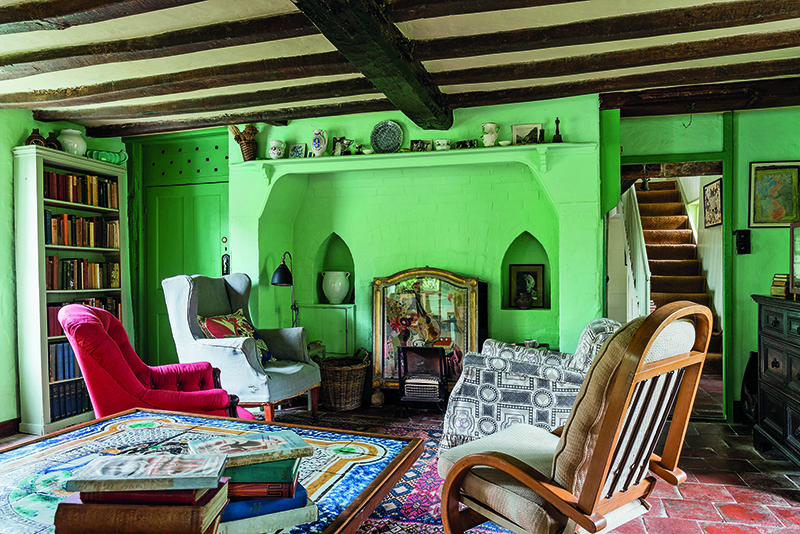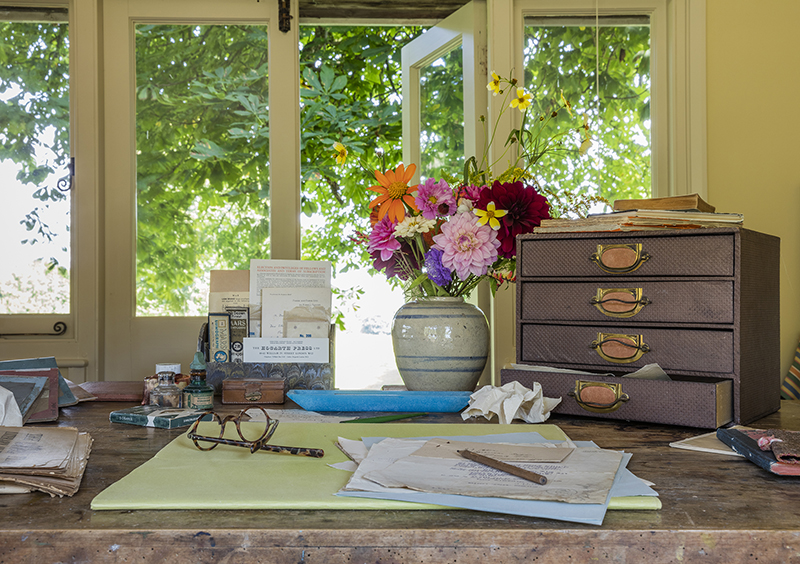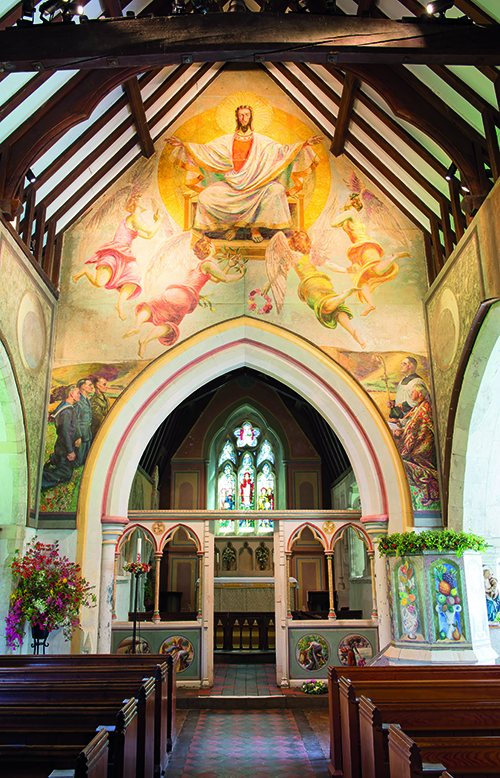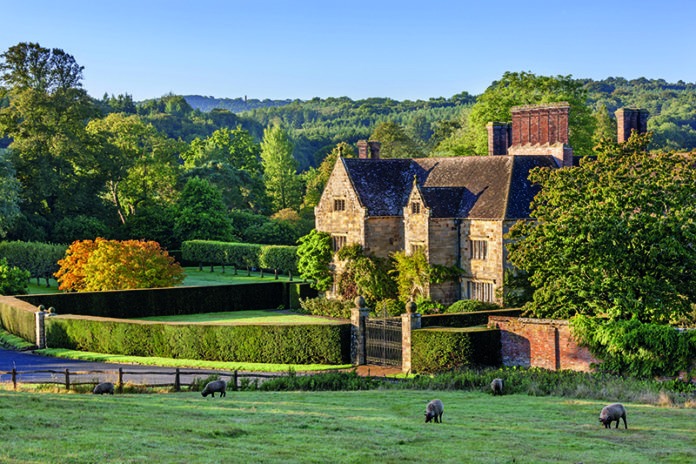Famous for the rural retreats of the influential Bloomsbury Group, idyllic East Sussex has inspired some of the country’s leading writers
With chalk cliffs and patchwork fields, medieval woodland and picturesque villages, East Sussex offers plenty of inspiration to the artistically minded. It’s no surprise then, that this little corner of southeast England has attracted some of the country’s leading writers, most notoriously the Bloomsbury Group, a bohemian set of writers, artists and philosophers drawn here in the first half of the 20th century.
The Bloomsbury connection dates back to 1910 when Virginia Stephen (soon to be Mrs Woolf) rented a house in Firle to escape the pressures of London life. Soon afterwards she moved to another house two miles away, taking the lease with her artist sister, Vanessa Bell.
The restless author took other Sussex houses, all in the same area, until in 1919 Virginia and her now husband, Leonard Woolf, bought Monk’s House in Rodmell. This small house with its big garden became a rural retreat for London’s Bloomsbury Group, hosting high-pro file visitors like the poet TS Eliot, the novelist EM Forster, the art critic Roger Fry and the historian Lytton Strachey. Meanwhile, Vanessa and her lover, the painter Duncan Grant, bought Charleston Farmhouse, only seven miles from Virginia and Leonard. The Bloomsbury set – its literary and artistic wings – had found their country locus, either side of the River Ouse. This connection between London’s Bloomsbury Square and East Sussex survived Virginia’s suicide in 1941 and continued up until 1961 when Vanessa died and was buried in Firle parish churchyard, next to Duncan Grant.

Monk’s House is now owned by the National Trust – as, incidentally, is Sissinghurst, the nearby home of the socialite and novelist Vita Sackville-West. Virginia and Vita famously had a love affair, a story that’s told in a new lm, Vita & Virginia.
Monk’s House is an old white clapboard building at the bottom of a narrow lane. When Virginia and Leonard moved in, it was semi-derelict. They removed walls, painted and decorated, and installed two lavatories, both allegedly named after Vita Sackville-West (an odd tribute to one’s lover). “This will be our address for ever and ever,” Virginia declared happily.
Ten years later, after the success of Virginia’s novel Mrs Dalloway, the couple added a writing lodge in the garden. Here today are displayed the editions of the Arden Shakespeare that Virginia covered with marbled paper while trying to distract herself from the crippling headaches she suffered from. Her spidery handwriting can still be read on each spine. Virginia and Leonard greatly enjoyed hours working together in their large garden. After her suicide Leonard buried Virginia’s ashes under an elm tree named after her. There used to be two elms in the garden; hers blew down eventually, but the one named after Leonard has survived. Next to it, twin busts of the couple mark the spot where their ashes lie.

After the understated decorative calm of Monk’s House, Charleston Farmhouse is an explosion of colour. Inspired by Italian frescoes and the Post-Impressionists, Vanessa and Duncan painted over everything in the house: the walls, the doors, the replaces and the furniture. Of the artistic ménage that consisted of Vanessa and her husband Clive Bell – an occasional visitor – Vanessa’s lover Duncan Grant and Duncan’s lover David Garnett, Vanessa wrote, “It will be an odd life, but…it ought to be a good one for painting.”
Today the house is owned by the Charleston Trust and has recently been restored by the team that brought the Brighton Pavilion back to its Regency glory. Rooms
are crammed with ceramics, paintings and textiles created by Duncan and Vanessa, alongside paintings by Renoir, Picasso, Sickert and Delacroix. The space is cosy, cluttered and full of an art that rejected the “false prettiness” that Vanessa ascribed to Edwardian England. Only the kitchen is purely functional.
Outside the old farmhouse is a walled garden, designed by Roger Fry. It has since been filled with statues made by Quentin Bell, Vanessa’s son who went on to be a distinguished
art historian. Vanessa’s bedroom has French windows that open directly on to the garden. “The house seems full of young people in very high spirits,” she wrote in 1936 of Quentin’s generation. “Laughing at their own jokes and lying about in the garden which is simply a dithering blaze of flowers and butterflies and apples.”

Just three miles south of Charleston is the Church of St Michael and All Angels, Berwick. At the height of the Second World War, Bishop Bell of Chichester came up with an ingenious idea to decorate the bare walls of this local village church, as Vanessa explained in a letter: “Duncan is in touch with the Bishop of Chichester…It seems extremely likely that we shall all…be turned into a neighbouring church…and allowed to cover the walls with large works. What a wartime occupation! It needed Hitler to bring such things to pass.”
The Church approved the group’s sketches, though Duncan’s Christ was initially deemed “too attractive”, and Bell’s Virgin “frivolous”. Still, an agreement was reached and a series of murals by Vanessa Bell, Duncan Grant and Quentin Bell was painted in the nave of the Anglo-Saxon church between 1942 and 1943. Such is the lure of Bloomsbury that the paintings – a Nativity, an Annunciation, Christ in Glory and some agricultural scenes – attract around 10,000 visitors to the church every year.
Bloomsbury was a remarkable phenomenon: a group of high-minded British intellectuals who also enjoyed laughter and sexual adventurism. That they colonised a few square miles of the East Sussex countryside provides a curious chapter in the history of the Bloomsbury Group, and gives an additional reason to visit this most beautiful county.






 © 2024
© 2024